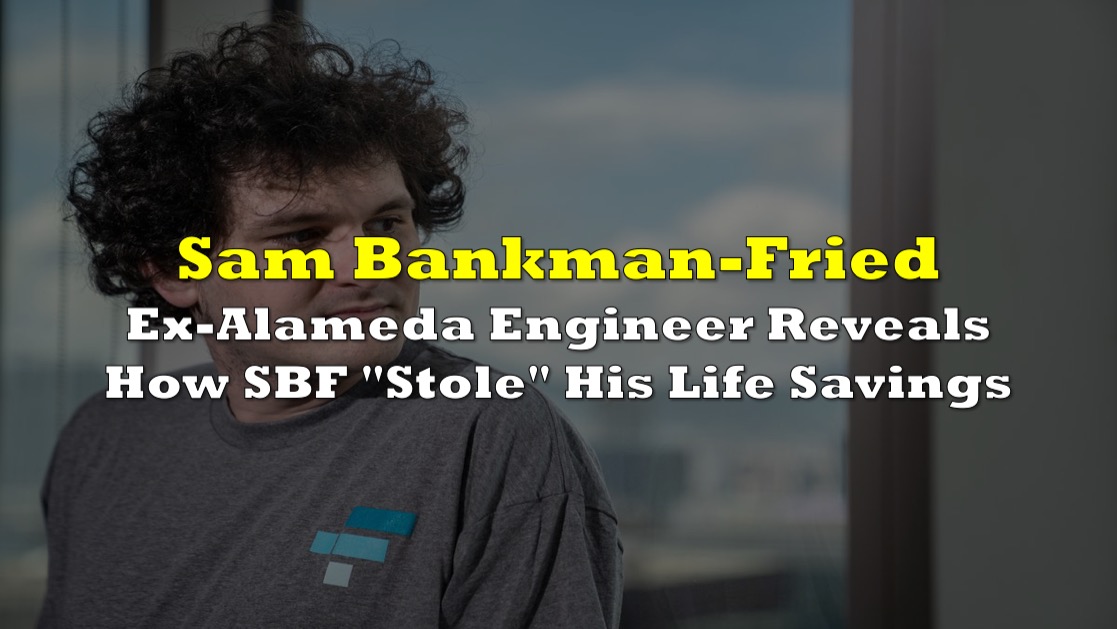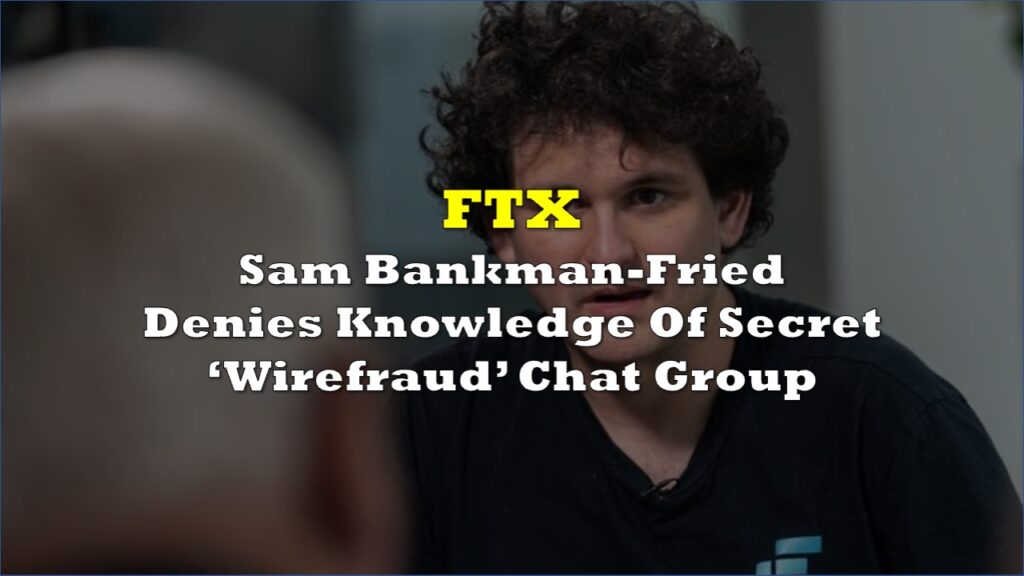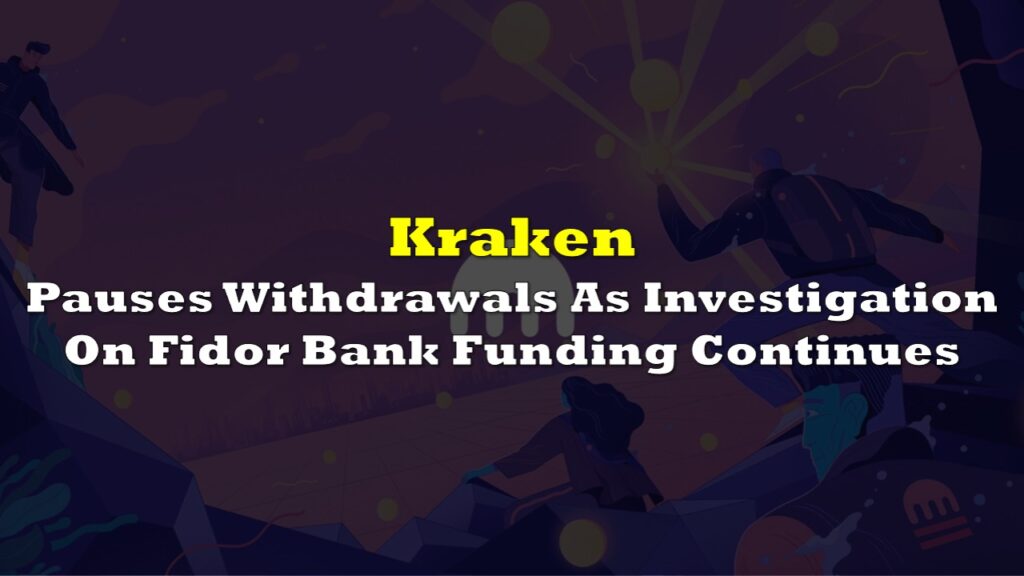In a shocking X (fka Twitter) thread, Aditya Baradwaj, who claims to be a former engineer at Alameda Research, has unveiled a compelling account of his experiences working alongside Sam Bankman-Fried, the founder of Alameda Research and the bankrupt FTX crypto exchange.
The revelations speak as to how the former engineer had his “entire life savings stolen” by Bankman-Fried, as well as provides an insider’s perspective on the meteoric rise, grand ambitions, and subsequent collapse of the crypto mogul’s empire.
As an engineer at Alameda Research, I had my entire life savings stolen from me by my former boss: Sam Bankman-Fried.
— Adi (e/acc) (@aditya_baradwaj) August 23, 2023
Now, after months of recuperation from the craziness of the FTX collapse, I’m ready to tell my story.
Let’s start at the beginning:
(1/25) 🧵#SBF #FTX pic.twitter.com/x5wKvT0Dy2
The thread, which is also available as a full blog post on the author’s Substack, recounts his journey from his early days at Alameda Research to the heart-wrenching moment when he saw his life savings disappear due to the FTX collapse.
“Highly intertwined”
Baradwaj’s account begins with his first meeting with Bankman-Fried, a moment that marked his transition from Google to the mysterious world of cryptocurrency trading. The setting – an unassuming office in downtown Berkeley – belied the enormous financial operations that were taking place within its walls.
“The 4th floor tenant’s name on the directory was conspicuously empty, revealing only that they shared the building with names such as “Pacific Lutheran Theological Seminary”. Hardly the neighbors I’d expected for a multi-billion-dollar crypto trading firm,” Baradwaj wrote.
The first meeting with Bankman-Fried, the former engineer remembers, was him “sitting at his desk in the middle of the trading floor, taking a call while playing League, in characteristic fashion.”
“And yes, that was Alameda’s trading floor… Despite the fact that on paper, Sam had already transitioned to running FTX full-time, in practice both companies were highly intertwined,” the former engineer added.
The 4th floor tenant’s name on the directory was conspicuously empty, revealing only that they shared the building with names such as “Pacific Lutheran Theological Seminary”. Hardly the neighbors one would expect for a multi-billion-dollar crypto trading firm.
— Adi (e/acc) (@aditya_baradwaj) August 23, 2023
(5/25)
The intricately intertwined relationship between FTX and Alameda Research is one of the key factors in the lawsuit by the US’ Commodity Futures Trading Commission against the trading firm. The agency alleged that the company “created features in the underlying code for FTX that allowed Alameda to maintain an essentially unlimited line of credit on FTX.”
“Two wolves”
Despite being an advocate for decentralized finance, Bankman-Fried was steering both Alameda Research and FTX in directions that raised questions about the alignment with his proclaimed ideals.
“This was the first of many contradictions that I would see with Sam. On one hand, he would extoll the virtues of decentralized, permissionless finance to anyone who would listen. But a custodial, KYC’d derivatives exchange isn’t exactly a paragon of decentralization,” Baradwaj explained. “Inside you there are two wolves, I guess… or something.”
As the thread delves deeper, the former engineer recalls the ambitious vision Bankman-Fried had for FTX, which extended beyond being a mere cryptocurrency exchange. The narrative touches on topics as diverse as vaccine factories in the Bahamas, political donations, and groundbreaking biotech research, showcasing the broad scope of Bankman-Fried’s aspirations.
Baradwaj paints a picture of a billionaire entrepreneur who seemed poised to revolutionize industries and make a positive impact on a global scale. The allure of his vision attracted not only investors but also passionate employees who shared his altruistic goals.
“Later that night we ordered Sliver Pizza and chatted over a game of bughouse – another favorite of Sam’s – and he revealed his plan to move the entire company to a tiny island in the Caribbean. I knew nothing about the Bahamas at the time. But as Sam spoke, it became clear that he had done his research: ‘Did you know that FTX’s revenue is greater than 10% of the Bahamas’ GDP?’,” Baradwaj recounted.
I knew nothing about the Bahamas at the time. But as Sam spoke, it became clear that he had done his research.
— Adi (e/acc) (@aditya_baradwaj) August 23, 2023
“Did you know that FTX’s revenue is greater than 10% of the Bahamas’ GDP?”
I didn’t know, but a quick Google search revealed that he probably wasn’t far off.
(12/25) pic.twitter.com/P23jcDsugH
Earlier this year, a recent filing by the new FTX management revealed that a certain “Attorney-1” allegedly assisted the former FTX senior executives’ move to the Bahamas because it was “friendly” and “cutting back on red tape.”
The report further claimed that the former FTX executives “did not commingle and misuse customer deposits by accident,” describing that Bankman-Fried, assisted by Attorney-1, “lied to banks and auditors, executed false documents, and moved the FIX Group from jurisdiction to jurisdiction.” They concluded that this was by design, “in a continual effort to enable and avoid detection of their wrongdoing.”
The identity of Attorney-1 can’t be certainly identified but given the description and the reach of described actions, it is believed to be Daniel Friedberg, the former chief regulatory officer of FTX. Friedberg, earlier this year, had reportedly been actively cooperating with the authorities regarding the investigation into Bankman-Fried.
“I saw irresponsibility”
Baradwaj described the time spent in Alameda Research as having their life “transformed in ways I could never have imagined.”
“As a starry-eyed new hire, it was hard not to get drawn in by the boldness of Sam’s vision. Many of us had joined the company precisely because we wanted to do good in the world. And here was a billionaire, not yet 30 years old, who was using his fortune to bankroll a radical new vision for the future,” the former engineer revealed, adding “I experienced opulence the likes of which I’d only seen before in movies.”
I experienced opulence the likes of which I’d only seen before in movies.
— Adi (e/acc) (@aditya_baradwaj) August 23, 2023
Got flown around the world on a regular basis between Berkeley, Hong Kong, and the Bahamas.
Brushed elbows with celebrities, sports icons, and political figures.
(20/25)
At the height of the FTX collapse, it was revealed that the firm, Bankman-Fried’s parents, and senior officials of the firm purchased at least 19 homes in the Bahamas valued at roughly $121 million over the last two years, according to official documents.
Baradwaj’s narrative, however, takes a darker turn as the fore exposes the underbelly of the operation. Irresponsible risk management, technical debt, and wasteful spending casted a shadow on Bankman-Fried’s grand plans. The FTX collapse left customers, investors, and employees financially devastated, contrasting starkly with the grandeur of the initial vision.
“Yet at the same time, I saw irresponsibility. Careless risk management for a company handling billions of dollars in capital. Technical debt that would make any software engineer shed a tear. Millions lost in wasteful spending, and the hubris that it wouldn’t matter,” Baradwaj countered.
“Of course, Sam didn’t end up building a vaccine factory or eradicating malaria. His customers, investors, and employees – the ones who trusted him most – are financially devastated. And the ruins of the half-built FTX headquarters lay strewn across the beaches of Nassau,” the former engineer added.
Of course, Sam didn’t end up building a vaccine factory or eradicating malaria. His customers, investors, and employees – the ones who trusted him most – are financially devastated. And the ruins of the half-built FTX headquarters lay strewn across the beaches of Nassau.
— Adi (e/acc) (@aditya_baradwaj) August 23, 2023
(22/25) pic.twitter.com/bJGCtXHnb9
Baradwaj juxtaposed the narrative with the fact that Bankman-Fried now finds himself behind bars at the Metropolitan Detention Center (MDC) after violating the terms of his house arrest, underscoring the contradiction of an individual who championed decentralization and innovation ending up behind bars for violating the very rules he spoke of.
Earlier this month, federal judge Lewis Kaplan revoked Bankman-Fried’s bail, asserting that the crypto mogul had repeatedly pushed the boundaries of his bail conditions. The key allegation that swayed the judge’s decision was that the defendant had potentially tampered with witnesses on two separate occasions. Kaplan’s verdict was explicit in suggesting that there was credible reason to believe that such interference had indeed transpired.
“Over the past months, I’ve seen a ton of speculation online about FTX and Alameda. Unfortunately, not all of it has been based in reality. What were Sam, Caroline, and the others like in person? Was it all just a scam? How was life in the Bahamas? People deserve to know,” Baradwaj concluded.
As he prepares for his trial, Bankman-Fried will be housed at the MDC in Brooklyn, a facility marred by controversies and subpar conditions. Notably, this jail has been criticized for staffing shortages, power outages, and even incidents of maggots in inmates’ food. A guard was recently caught accepting bribes to smuggle drugs, highlighting the challenges within the institution.
In a letter to Judge Kaplan, Bankman-Fried’s legal team cited his psychiatrist, George Lerner, who explained how necessary it is for the detainee to get regular access to his prescribed meds. Dr. Lerner revealed that the 31-year old former crypto mogul has “a history of Major Depressive Disorder and Attention Deficit Hyperactivity Disorder (ADHD).”
“Without the aforementioned psychiatric medications… Mr. Bankman-Fried will experience a return of his depression and ADHD symptoms and will be severely negatively impacted in his ability to assist in his own defense,” Dr. Lerner reasoned.
In a New York Mag piece back in February, it was revealed that Bankman-Fried in early 2022 hired Dr. Lerner to serve as a coach for employees who were stressed out by the growing crypto firm’s grueling schedule. Lerner, Bankman-Fried’s psychiatrist since 2019, coached 100 of FTX’s 300 staffers while seeing 20 of them in his private practice.
A comprehensive 70-page court filing, released earlier this month, shed light on the prosecution’s plan, highlighting their intention to rely on testimonies from individuals within Bankman-Fried’s inner circle, notably including his former romantic partner and CEO of Alameda Research, Caroline Ellison.
His record $250 million bail was revoked after accusations of leaking private letters from Ellison to the New York Times, which prosecutors argue was an attempt to influence her testimony.
Prosecutors emphasize that they aim to utilize evidence from Ellison’s notes during her tenure under Bankman-Fried, including a memo titled ‘Things Sam Is Freaking Out About.’ Her testimony, along with that of several other top FTX associates, forms a crucial part of the case against the former billionaire.
Information for this briefing was found via the sources mentioned. The author has no securities or affiliations related to this organization. Not a recommendation to buy or sell. Always do additional research and consult a professional before purchasing a security. The author holds no licenses.









